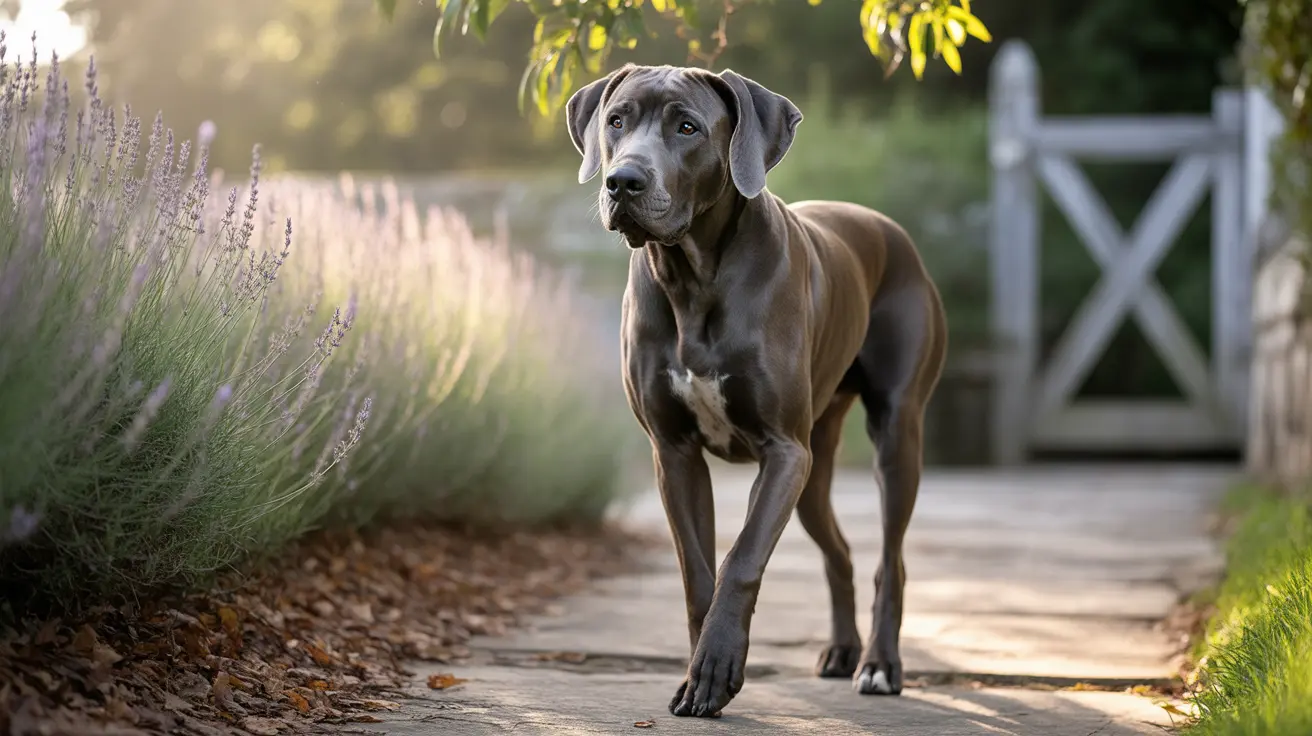What Makes a Blue Rhodesian Ridgeback?
The Blue Rhodesian Ridgeback represents one of the rarest and most intriguing color variations in this distinguished African breed. While most people know Rhodesian Ridgebacks for their classic wheaten coats ranging from light sandy to rich red, the blue variation results from a specific genetic phenomenon known as color dilution.
This unique coloration occurs when a puppy inherits two copies of the recessive dilution gene (dd) from its parents. The result is a stunning silvery-grey or blue-tinged coat that stands apart from the standard wheaten colors. However, it's important to note that this color variation, while beautiful, is not recognized by major kennel clubs or breed standards.
Understanding the Genetics Behind Blue Coloration
The blue coat color in Rhodesian Ridgebacks is caused by a specific genetic mechanism involving the melanophilin (MLPH) gene at the D locus. When a dog inherits two copies of the dilute allele (dd), it affects how pigment is distributed in the coat, creating the distinctive blue or silver appearance.
This dilution effect impacts both black pigment (eumelanin) and red pigment (phaeomelanin), resulting in:
- Black pigment becoming grey or blue
- Red pigment becoming lighter, creating a pale beige or isabella color
- A overall softer, diluted appearance to the coat
Standard Coat Colors vs. Blue Variation
The American Kennel Club (AKC) and other major breeding organizations only recognize wheaten shades in Rhodesian Ridgebacks, ranging from light wheaten to red wheaten. These standard colors serve important historical purposes, including:
- Providing effective camouflage in African hunting environments
- Offering natural protection from intense sun exposure
- Maintaining the breed's traditional appearance and heritage
Health Considerations for Blue Rhodesian Ridgebacks
While the blue coloration itself isn't inherently harmful, there are some health considerations that potential owners should be aware of. Some dilute-colored dogs may be prone to Color Dilution Alopecia (CDA), though this condition is relatively rare in Ridgebacks compared to other breeds with dilute coats.
Responsible breeders typically perform genetic testing to identify carriers of the dilution gene, helping to make informed breeding decisions and ensure the health of their puppies.
Frequently Asked Questions
What does the rare blue coloration in Rhodesian Ridgebacks mean, and why is it not recognized by breed standards?
Blue coloration in Rhodesian Ridgebacks results from a genetic dilution factor that creates a silvery-grey or blue-tinged coat. It's not recognized by breed standards because it deviates from the historically established wheaten colors that define the breed's traditional appearance and working heritage.
How can I identify if my Rhodesian Ridgeback puppy carries the dilution gene that causes a blue or silver coat?
The most reliable way to identify if your puppy carries the dilution gene is through genetic testing. Blue puppies are typically visible at birth, showing a notably lighter, silvery coat compared to their standard wheaten littermates.
Are there any health risks associated with blue or dilute coat colors in Rhodesian Ridgebacks?
While blue Rhodesian Ridgebacks may be at risk for Color Dilution Alopecia (CDA), this condition is less common in the breed compared to other dogs with dilute coats. Regular veterinary check-ups can help monitor for any potential coat-related issues.
Why do Rhodesian Ridgebacks have a distinctive ridge of hair growing backward along their spine?
The characteristic ridge is caused by a dominant genetic mutation on chromosome 18. This unique feature is what gives the breed its name and is a result of their African heritage, shared only with the Thai Ridgeback breed.
What are the accepted coat colors and nose colors for Rhodesian Ridgebacks according to official breed standards?
Official breed standards accept only wheaten colors ranging from light sandy to red wheaten. Both black and liver (brown) nose colors are accepted, though liver-nosed dogs should show no black pigmentation anywhere on their body.
Conclusion
While the blue Rhodesian Ridgeback may be a fascinating color variation, it's important for potential owners to understand that these dogs, though beautiful, don't meet breed standards for show purposes. However, they can still make wonderful family companions, provided they come from health-tested parents and responsible breeding programs.






